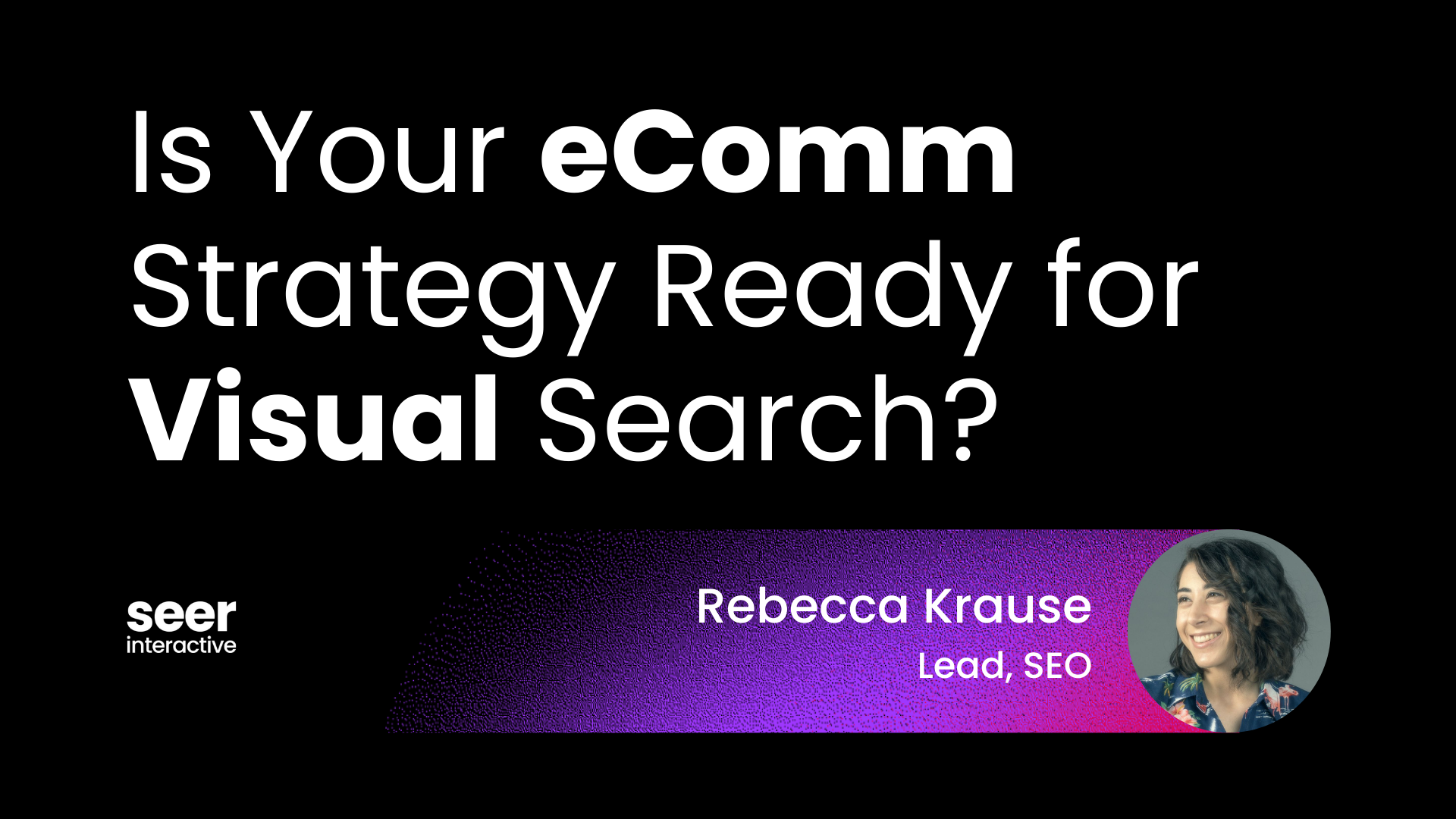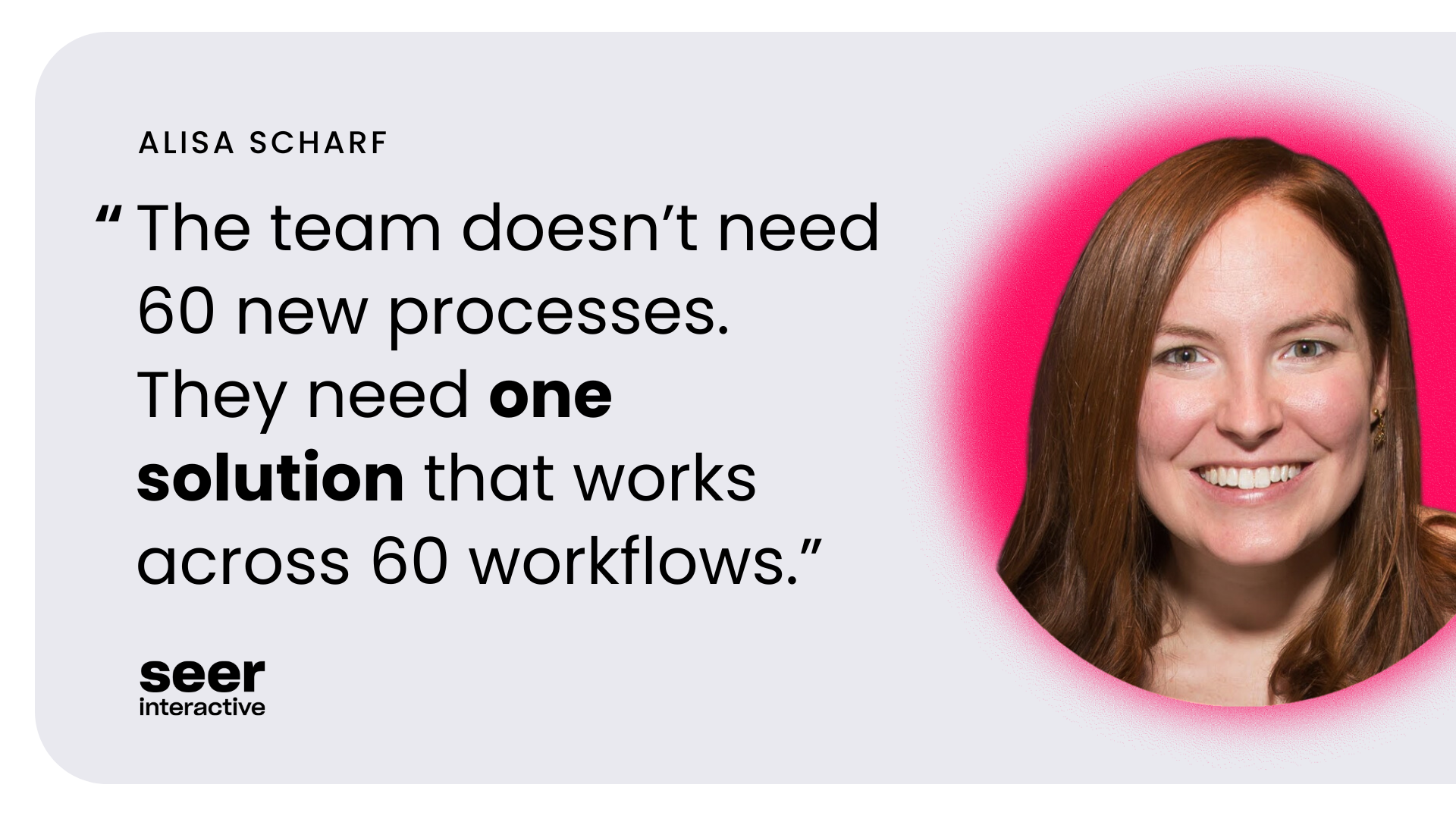- What is a Digital Marketing Plan for Nonprofits?
- Why do Nonprofit Organizations Need Digital Marketing?
- 10 Digital Marketing Tips for Nonprofits
- 1. Define Goals
- 2. Set Up Analytics
- 3. Set up a Local Presence (Google My Business)
- 4. Set up Social Media Profiles
- 5. Apply for Google Grants
- 6. Define Your Target Audience
- 7. Conduct Audience Research
- 8. Conduct Keyword Research
- 9. Develop a Content Calendar & Marketing Calendar
- 10. Measure Your Success and Adapt Your Strategy Accordingly
What is a Digital Marketing Plan for Nonprofits?
Think of your digital marketing plan as a roadmap to promote the services your organization offers the community. Although the specifics of creating a digital strategy for each nonprofit will vary, each plan has one thing in common - a destination of getting your mission heard.
The guide you’re about to read has 10 tips to help you get started, but remember, this is a create-your-own adventure based on your organization’s core goals and values.
Why do Nonprofit Organizations Need Digital Marketing?
Digital marketing is another tool in your toolbox to ensure your message reaches the right audience. That audience may be comprised of people who utilize your services, are prospective volunteers, or are potential donors. With a lot of free tools and resources, digital marketing can keep costs low for nonprofits.
10 Digital Marketing Tips for Nonprofits
1. Define Goals
The first step in building a digital marketing plan for your nonprofit should be defining your goals. Is your goal to increase brand visibility? To drive more online donations? To attract more volunteers?
Once you know your goals, you will be able to build the strategies that need to be executed in order to reach them. We recommend starting by determining your Objective, Strategies, and Tactics. To create this plan, start with your main objective and make it SMART (specific, achievable, timely, measurable, and realistic). Then, outline the strategies you will take to achieve that objective, along with the supporting tactics that are needed to achieve each of those strategies. See the image below for an example of what this approach looks like.
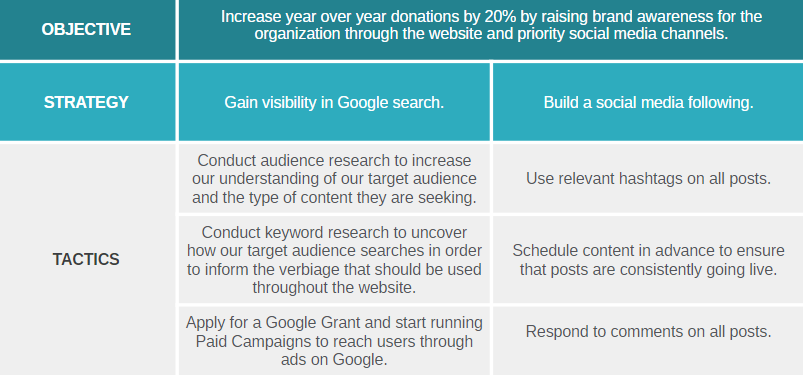
2. Set Up Analytics
In addition to defining goals, this is one of the first steps your nonprofit should set up; the order of these steps is interchangeable. If you have a website this should happen before you start acting on any marketing tactics. We recommend making sure your site is equipped with Google Analytics (or Adobe Analytics if that’s more your style) and Google Search Console. Google Analytics and Google Search Console are both free - making them ideal tools for a nonprofit.
But why?
Google Analytics (or Adobe) can track who visits your site. This includes what channel visitors are using to land on your site (whether it was an email, a paid ad, or from social media) so you can gauge how effective all of your online marketing initiatives are. Tracking landing page visits is only the tip of the iceberg of what Analytics Tracking can do for you.
Not convinced? Read our Analytics blog posts about tracking site search behavior, content engagement, scroll activity, and more!
Google Search Console, on the other hand, can give you great insights into the words that people are searching for and clicking on to get to your site. These are words that resonate with your audience. Knowing and understanding their intent can help inform future messaging for your marketing.
3. Set up a Local Presence (Google My Business)
Setting up a local presence through Google My Business (GMB) is a great (and free) way to engage with people who use your services, as well as donors and volunteers. If you’re not sure what a GMB listing is by name, that’s okay, because you’ve probably seen it in action. Check out Seer Interactive’s GMB listing below for an example.
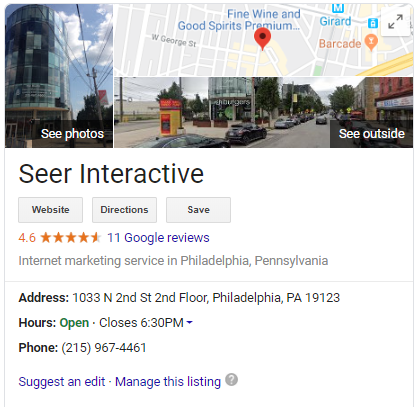
These listings are the best way to help people find your physical location - especially when they’re on the go. Directions only scratch the surface of benefits that GMB offers nonprofits. Over time we’ve seen GMB listings providing even more valuable information for searchers (and in turn for local organizations).
Nonprofits can use GMB listings to:
- Alleviate confusion for people searching for their services by
- Controlling the narrative with a description of the organization.
- Answering Frequently Asked Questions. People can submit their own questions on your GMG listing. Answer them to help clarify things and avoid confusion.
- Communicate all open hours to those who use their services by
- Displaying the correct hours of operation (is your nonprofit serving the community on day’s most people have off? You can include that pertinent information in a GMB listing!)
- “Adding Updates” to communicate time-sensitive information like the organization closing early due to poor weather.
- Promote events and measure success
- “Add Events” to promote upcoming fundraisers, volunteer events, and more.
- Keeping tabs on their audience and performance with insights! GMB “Insights” share what terms people searched to find your organization and how people interacted with your GMB listing. Analyzing these insights can help you better understand what language, posts, and events are resonating most with your target audiences.
4. Set up Social Media Profiles
Creating social media accounts is imperative for generating brand awareness. Once you’ve built your foundation and following, it can even be taken a step further to help you reach your organization’s key goals, such as donations and volunteer sign-ups. Below are 4 ways to maximize the impact of your social media accounts.
- Include a link to your website & a strong Call To Action (to donate or volunteer- whatever your main goal is).
Example of a good way to incorporate a link on your nonprofit’s Instagram profile:

Example of a way to include strong Call To Action on your nonprofit’s Facebook profile:
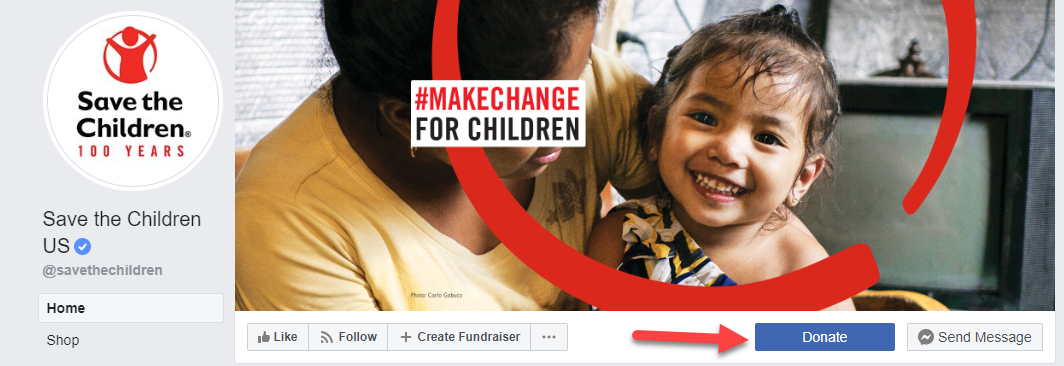
- Schedule your content in advance. Although maintaining social media is important, it may not be first on your task list every day. To ensure that your social media posts stay consistent while your priorities shift, we recommend using a free post-scheduling tool like Buffer. This will allow you to create your content while you have the time and predetermine the days you want content to be posted.
- Respond to comments. As your following increases, you will likely get messages from users asking how they can take action. Users are more likely to reach out if they can expect a fast response to a direct message. On some platforms (such as Facebook), your response rate is even displayed publicly.

- Use hashtags to reach your audience. Below are a few methodologies to help identify the best hashtags for your organization.
- Since you’re the expert of your target audience, brainstorm hashtags that they may follow, and plug them in to see if they are popular.
- Research what hashtags organizations similar to yours are using.
- Look into trending hashtags to identify if any of those fit into your niche (RiteTag is a great tool for this).
5. Apply for Google Grants
Google Grants offers $10,000 a month for qualifying nonprofits to advertise online (and it works just the same as Google Ads). This is an opportunity that we highly recommend capitalizing on whether you want to use ads to attract more donations or simply reach a larger audience with your story. Below we have outlined 5 simple steps to follow to apply for a Google Grant.
- Ensure that you meet the requirements. If you are a nonprofit with valid charity status in your country (in the US, this means that you have 501(c)(3) status, you will likely qualify unless:
- You are a healthcare organization (unless you are a nonprofit that works in the healthcare space such as cancer research)
- You are a government entity
- You are a school, university, or academic institution (and not one of the philanthropic arms of an institution)
- Register your organization with TechSoup in order to get a validation token. Please note that it may take up to 30 days to receive validation. The validation code you receive will be used in your Google for Nonprofits (in the next step).
- Enroll in Google for Nonprofits. Use your validation token to sign up for Google for Nonprofits. You will need to be enrolled in order to apply for a Google Grant.
- Apply for the Google Ad Grant. Once you are accepted into Google for Nonprofits, you are eligible to apply for an ad grant by following the steps below.
- Create your Google Ads account. Note: Ignore any space that asks you for credit card information. If entered, you will be configuring a standard account, not a Grant account.
- Complete the pre-qualification survey. This will inform Google of your nonprofits goals and improve the experience you have with Google Grants.
- Complete the Ad Grant Training video and quiz. Make sure to complete this with your full attention, as failure of the quiz will interfere with your pre-qualification approval.
- Submit for pre-qualification review. Expect that you will hear back from Google within 5 business days.
- Build your first campaign. Use this step by step guide for beginners to setting up Smart Campaigns.
- Wait for Google’s approval of your account.
- Once you complete all steps in the enrollment guide, you will be able to submit your account for final review and expect to hear back from Google within 10 business days.
6. Define Your Target Audience
Once you define your audience, you can determine where the best place is to reach them and how to best speak to them. This is one of the most important pieces of your marketing strategy. Think about it, you wouldn’t necessarily have the same exact conversations face to face with donors, volunteers, and people who use your services, right? The same needs to be true online.
By thinking “Audience-First” the rest of your strategy will fall in line.
- Define your audience
- Determine what you want to say to them (what they’ll be receptive to or engage with)
- Then decide what channel to use to reach them. These different channels can include email, social media, Google Posts, Google Ads, and content on the website.
7. Conduct Audience Research
Behind every computer and smartphone, there is a person, and at Seer we believe in getting to know that person before deciding the best way to reach and talk to them. You can identify and reach your target audience in a more personal and efficient way by utilizing audience research- and there’s plenty of free tools at your fingertips!
Utilize these 16 Free Digital Marketing Tools That Will Help you Identify & Reach Your Customers to get started.
8. Conduct Keyword Research
Keyword research is a critical component of your nonprofit’s digital marketing plan. It is the foundation for successful content marketing strategy, paid ads strategy, and more.
From your experience, you already know what people are looking for, but keyword research tells you how they’re looking for it. Incorporating these keywords into your messaging can help improve your site’s visibility on search engines (like Google), ensure you’re targeting the right keywords in paid campaigns, and speaking the same language as your target audience at every touchpoint in your digital marketing campaigns.
The Different Uses for Keyword Research
- Content Marketing: Consider this type of marketing as a “soft sell.” It should answer questions and stimulate interest in the services that your nonprofit offers. With that in mind, it’s not a branded play. Instead, it’s meant to create awareness of the types of services and their benefits to the community. One of our favorite tools for keyword research for content marketing is Answer the Public. This tool identifies what questions people are asking about a particular topic. Questions you can answer with your content!
If you’re stuck and not sure what content to create based on the keywords you’ve discovered, Google them. Are other nonprofits ranking for these terms? If so, do a little bit of competitive research. Click on their sites, see what are they doing and determine how you can emulate it on your own organization’s site.💡
- Identifying Gaps on Website: With the Google Ads Search Terms Report (free if you’re running Google Ads) nonprofits can see all the searches that drove potential volunteers, donors, and clientele to your site with your paid campaigns. If there is information people are searching for and clicking on in your paid campaigns, consider adding a web page to speak to it. If there’s language resonating with target audiences, consider incorporating it across other marketing channels.
- Create more engaging messaging: Using tools like Google Search Console & Google My Business, nonprofit organizations can identify the terms that are driving people to the site or GMB listing. Evaluate how these terms can create more engaging messaging across your other marketing channels (like email, paid ads, and social media).
Targeting keywords at the right time
Some keywords have seasonal interest. Knowing the seasonality of search terms can help you know when to send out outreach emails, plan social media posts, and schedule ads.
A great tool to use for this is Google Trends. Google Trends shows the relative search interest of a given term or topic over time. Look out for spikes in interest, these are likely when the subject is most top of mind.
For example, for the World Wide Fund for Nature (WWF), there is seasonal spikes in interest for the organization near the holidays (please see screenshot below). Pairing this with the statistic that ~30% of annual giving occurs in December, it may indicate that the best time to ask for donations is during the holiday season.
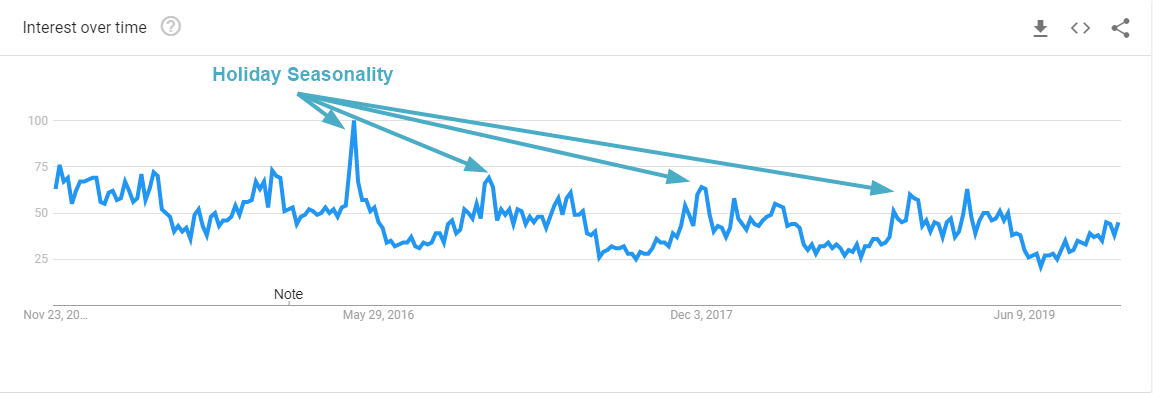
This probably isn’t a shock to you. What may be surprising is that there are additional, seasonal spikes in interest for April and March (please see screenshot below). Could this be an opportunity to ask for donations again where you’ll see a bigger return on your marketing efforts?
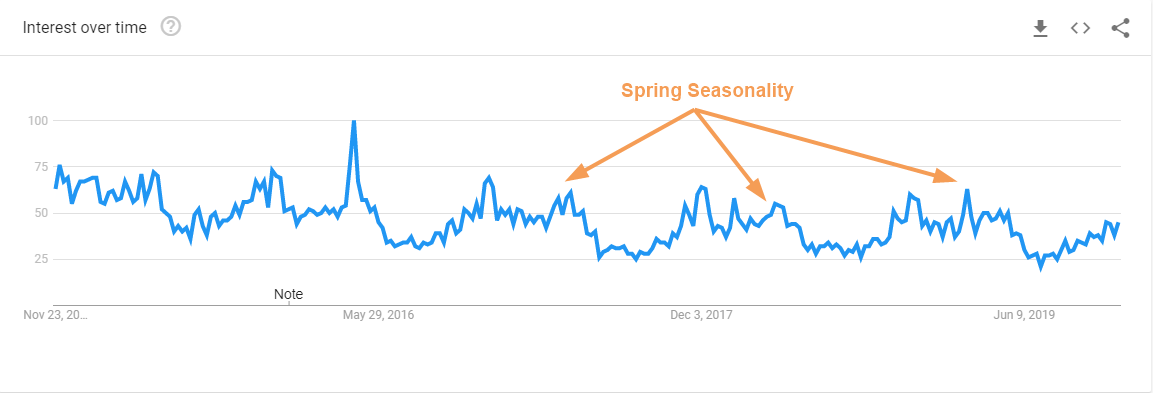
9. Develop a Content Calendar & Marketing Calendar
The audience, competitive, and keyword research you’ve performed is about to have a big payoff. Rather than guessing what content will resonate with your target audiences, you have data to drive your content strategy. You know what message resonates with your audiences, how competitors are positioning these messages, and the keywords that they’re typing to find this content. A perfect trifecta. But how do you keep all this great information and all the ideas that it has inspired organized? Create a marketing calendar.
Create a marketing calendar that makes sense for your nonprofit. It doesn’t need to be a rigid year-long, quarter-long, etc. calendar like the example we included below. Instead, work backward from the goals you defined. For example, if you have a Gala coming up in 7 months and you want to get 50 early bird RSVPs in 3 months, 75 regular RSVPs in 5 months, and then 160 by the Gala, your marketing calendar should be tailored to hitting those milestones.
Some of our favorite (free) tools to keep content calendars organized are:
- Google Sheets - Create a project plan in Google Sheets. Get down the granularity (days, weeks, etc.) and layout when you’d like to get different initiatives started and completed. Two of our favorite things about this tool is that you can share it with every member of your team and that it can be updated and shared immediately with those team members in real-time. Everyone on the same page, at the same time. Seriously. Please see screenshot below for an example of what a Digital Marketing Plan for a nonprofit could look like.
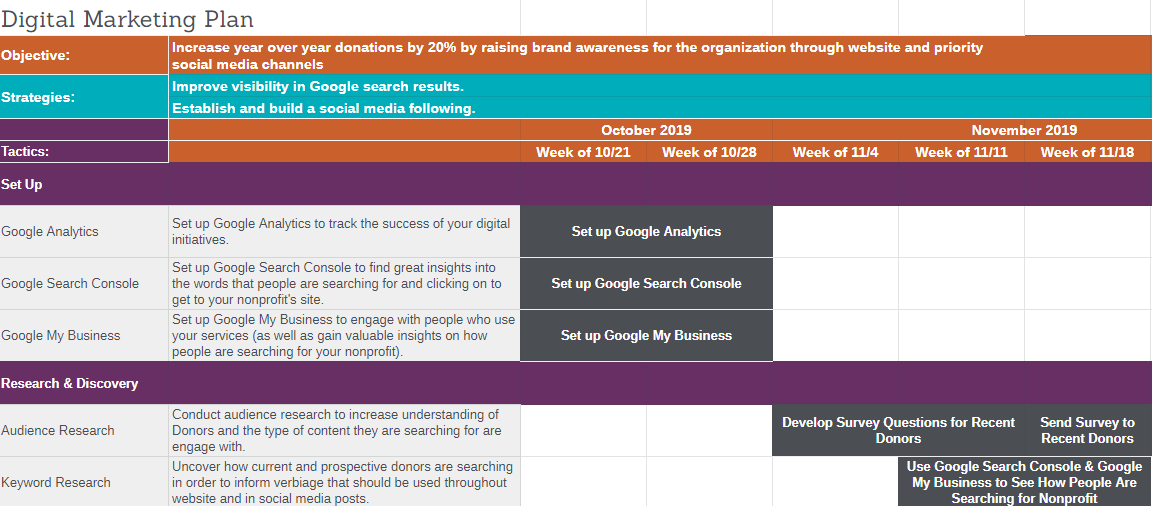
- Trello - Another collaborative platform we love! Share it with team members, create to-do’s with deadlines and assigned members. Organize your boards and tasks in whatever way makes sense for your environment. If you’re stuck on how to get started, a great jumping-off point is creating boards for “upcoming,” “in progress,” and “completed.” For each board add a card (to-do) for each initiative you have based on its status. For example, if you are in the process of creating a holiday campaign for email, but it under “in progress,” add a due date, and assign it to the appropriate member of the team. Once it’s been completed, move this card to the “completed” board.
Keep yourself on-schedule with automated publishing tools like Buffer or Hootsuite (limited free versions available) - and/or Sprout Social (if you want to pay to play!) 💡
10. Measure Your Success and Adapt Your Strategy Accordingly
So you have executed your digital marketing strategy congratulations! However, continuously measuring your success and adjusting your strategy accordingly is just as important as the beginning.
In order to effectively measure the success of your current strategy and tactics, we recommend setting Key Performance Indicators (KPIs). These will consist of measurable values that will demonstrate how effectively you are pacing towards achieving your key goals.
Below are 7 examples of digital marketing KPIs that you can use to measure success for your nonprofits digital marketing strategy:
- Online donation amount
- Online volunteer sign-up
- Marketing spend per conversion
- Website traffic
- Click-through rate
- Number of social media followers
- Social media impressions and engagement rates
Stay up to date on Digital Marketing
The world of digital marketing is constantly changing and regardless of service, your nonprofit will be impacted by these changes. With algorithm updates, privacy policy updates, local SEO changes, and more to keep an eye on, it can be a full-time job.


